
An oil platform is a large structure with facilities to extract and process petroleum and natural gas that lie in rock formations beneath the seabed. Many oil platforms will also have facilities to accommodate the workers, although it is also common to have a separate accommodation platform linked by bridge to the production platform. Most commonly, oil platforms engage in activities on the continental shelf, though they can also be used in lakes, inshore waters, and inland seas. Depending on the circumstances, the platform may be fixed to the ocean floor, consist of an artificial island, or float. In some arrangements the main facility may have storage facilities for the processed oil. Remote subsea wells may also be connected to a platform by flow lines and by umbilical connections. These sub-sea facilities may include one or more subsea wells or manifold centres for multiple wells.
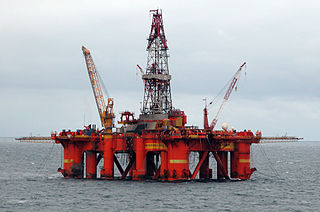
A semi-submersible platform is a specialised marine vessel used in offshore roles including as offshore drilling rigs, safety vessels, oil production platforms, and heavy lift cranes. They have good ship stability and seakeeping, better than drillships.
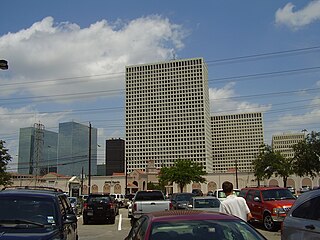
Transocean Ltd. is an American drilling company. It is the world's largest offshore drilling contractor based on revenue and is based in Vernier, Switzerland. The company has offices in 20 countries, including Canada, the United States, Norway, United Kingdom, India, Brazil, Singapore, Indonesia, and Malaysia.
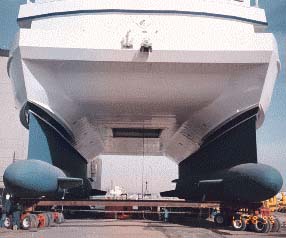
A moon pool is an equipment deployment and retrieval feature used by marine drilling platforms, drillships, diving support vessels, fishing vessels, marine research and underwater exploration or research vessels, and underwater habitats. It is also known as a wet porch. It is an opening found in the floor or base of the hull, platform, or chamber giving access to the water below. Because of its stable location, it safely allows technicians or researchers to lower tools and instruments into the sea.

Chikyū (ちきゅう) is a Japanese scientific drilling ship built for the Integrated Ocean Drilling Program (IODP). The vessel is designed to ultimately drill 7 km beneath the seabed, where the Earth's crust is much thinner, and into the Earth's mantle, deeper than any other hole drilled in the ocean thus far.
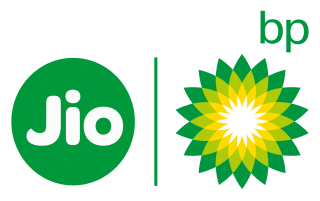
Jio-bp, or legally Reliance BP Mobility Limited, is an Indian oil and gas company, owned by Mukesh Ambani of Reliance Industries Limited (RIL). It is based in Navi Mumbai, Maharashtra, India. It is vertically integrated and is involved in hydrocarbon exploration, production, refining and also has interests in the downstream business and operates over 1700 Retail Fuel Outlets in India. It also operates the largest oil refinery in the world, situated in Jamnagar.
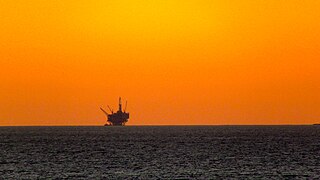
Offshore drilling is a mechanical process where a wellbore is drilled below the seabed. It is typically carried out in order to explore for and subsequently extract petroleum that lies in rock formations beneath the seabed. Most commonly, the term is used to describe drilling activities on the continental shelf, though the term can also be applied to drilling in lakes, inshore waters and inland seas.
Ocean Rig UDW Inc. was an operator of semi-submersible oil platforms and underwater drillships and was based in Athens. In 2018, the company was acquired by Transocean.
Subsea technology involves fully submerged ocean equipment, operations, or applications, especially when some distance offshore, in deep ocean waters, or on the seabed. The term subsea is frequently used in connection with oceanography, marine or ocean engineering, ocean exploration, remotely operated vehicle (ROVs) autonomous underwater vehicles (AUVs), submarine communications or power cables, seafloor mineral mining, oil and gas, and offshore wind power.
"Offshore", when used in relation to hydrocarbons, refers to operations undertaken at, or under the, sea in association with an oil, natural gas or condensate field that is under the seabed, or to activities carried out in relation to such a field. Offshore is part of the upstream sector of the oil and gas industry.

Deepwater Horizon was an ultra-deepwater, dynamically positioned, semi-submersible offshore drilling rig owned by Transocean and operated by the BP company. On 20 April 2010, while drilling in the Gulf of Mexico at the Macondo Prospect, a blowout caused an explosion on the rig that killed 11 crewmen and ignited a fireball visible from 40 miles (64 km) away. The fire was inextinguishable and, two days later, on 22 April, the Horizon collapsed, leaving the well gushing at the seabed and becoming the largest marine oil spill in history.

A jackup rig or a self-elevating unit is a type of mobile platform that consists of a buoyant hull fitted with a number of movable legs, capable of raising its hull over the surface of the sea. The buoyant hull enables transportation of the unit and all attached machinery to a desired location. Once on location the hull is raised to the required elevation above the sea surface supported by the sea bed. The legs of such units may be designed to penetrate the sea bed, may be fitted with enlarged sections or footings, or may be attached to a bottom mat. Generally jackup rigs are not self-propelled and rely on tugs or heavy lift ships for transportation.
Deepwater drilling, or deep well drilling, is the process of creating holes in the Earth's crust using a drilling rig for oil extraction under the deep sea. There are approximately 3400 deepwater wells in the Gulf of Mexico with depths greater than 150 meters.
Transocean Marianas was an Earl & Wright Sedco 700 design semi-submersible platform drilling unit capable of operating in harsh environments and water depths up to 7,000 feet (2,100 m) using an 47.6 cm (18.75 in), 15,000 psi blowout preventer (BOP), and a 53 cm (21 in) outside diameter (OD) marine riser.
The Macondo Prospect is an oil and gas prospect in the United States Exclusive Economic Zone of the Gulf of Mexico, off the coast of Louisiana. The prospect was the site of the Deepwater Horizon drilling rig explosion in April 2010 that led to a major oil spill in the region from the first exploration well, named itself MC252-1, which had been designed to investigate the existence of the prospect.

On April 20, 2010, an explosion and fire occurred on the Deepwater Horizon semi-submersible mobile offshore drilling unit, which was owned and operated by Transocean and drilling for BP in the Macondo Prospect oil field about 40 miles (64 km) southeast off the Louisiana coast. The explosion and subsequent fire resulted in the sinking of the Deepwater Horizon and the deaths of 11 workers; 17 others were injured. The same blowout that caused the explosion also caused an oil well fire and a massive offshore oil spill in the Gulf of Mexico, considered the largest accidental marine oil spill in the world, and the largest environmental disaster in United States history.
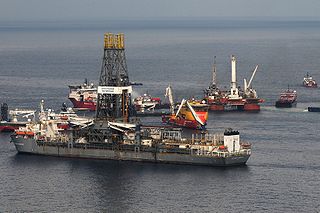
Discoverer Enterprise is a fifth generation deepwater double hulled dynamically positioned drillship owned and operated by Transocean Offshore Deepwater Drilling Inc., capable of operating in moderate environments and water depths up to 3,049 m (10,000 ft) using an 18.75 in (47.6 cm), 15,000 psi blowout preventer (BOP), and a 21 in (53 cm) outside diameter (OD) marine riser. From 1998 to 2005 the vessel was Panama-flagged and currently flies the flag of convenience of the Marshall Islands.

Deepwater Nautilus is an ultra-deepwater, semi-submersible offshore drilling rig.
Appaloosa is an offshore oil field located in the Mississippi Canyon blocks 459, 460, 503, and 504 of the United States sector of the Gulf of Mexico. It is a part of the Greater Longhorn area. The field is developed by the Italian energy company Eni.
Ocean development refers to the establishing of human activities at sea and use of the ocean, as well as its governance.

















